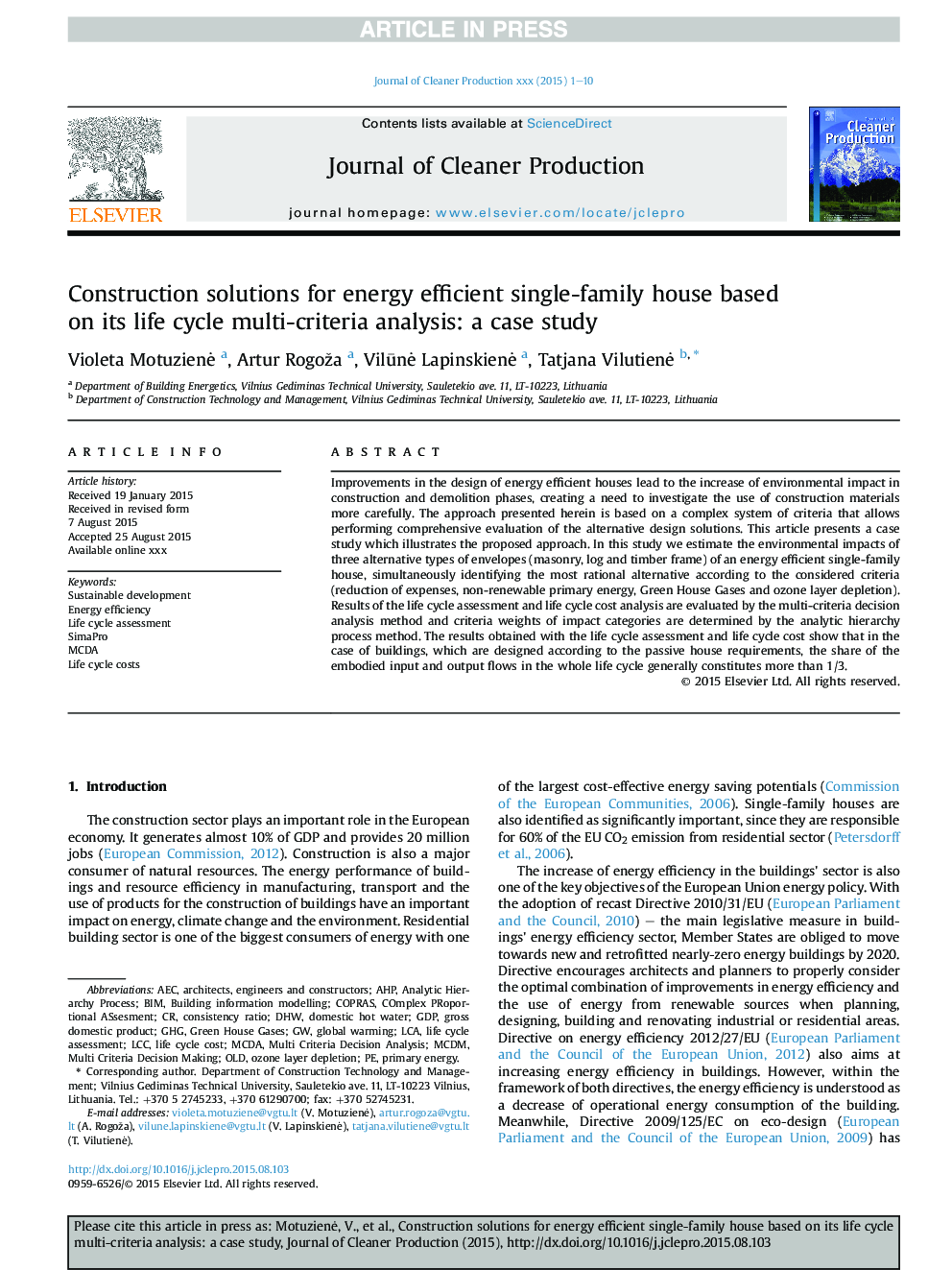| Article ID | Journal | Published Year | Pages | File Type |
|---|---|---|---|---|
| 10688061 | Journal of Cleaner Production | 2016 | 10 Pages |
Abstract
Improvements in the design of energy efficient houses lead to the increase of environmental impact in construction and demolition phases, creating a need to investigate the use of construction materials more carefully. The approach presented herein is based on a complex system of criteria that allows performing comprehensive evaluation of the alternative design solutions. This article presents a case study which illustrates the proposed approach. In this study we estimate the environmental impacts of three alternative types of envelopes (masonry, log and timber frame) of an energy efficient single-family house, simultaneously identifying the most rational alternative according to the considered criteria (reduction of expenses, non-renewable primary energy, Green House Gases and ozone layer depletion). Results of the life cycle assessment and life cycle cost analysis are evaluated by the multi-criteria decision analysis method and criteria weights of impact categories are determined by the analytic hierarchy process method. The results obtained with the life cycle assessment and life cycle cost show that in the case of buildings, which are designed according to the passive house requirements, the share of the embodied input and output flows in the whole life cycle generally constitutes more than 1/3.
Keywords
SimaProCOPRASMCDMGHGAECOLDMCDALCCDomestic hot waterDHWLCALife Cycle AssessmentPrimary energyEnergy efficiencyMulti criteria decision analysisOzone layer depletionMulti Criteria Decision MakingSustainable developmentGross domestic productGDPAnalytic hierarchy processAHPBuilding information modellingBIMConsistency ratioLife cycle costsLife cycle costGreen house gasesGlobal warming
Related Topics
Physical Sciences and Engineering
Energy
Renewable Energy, Sustainability and the Environment
Authors
Violeta MotuzienÄ, Artur Rogoža, VilÅ«nÄ LapinskienÄ, Tatjana VilutienÄ,
